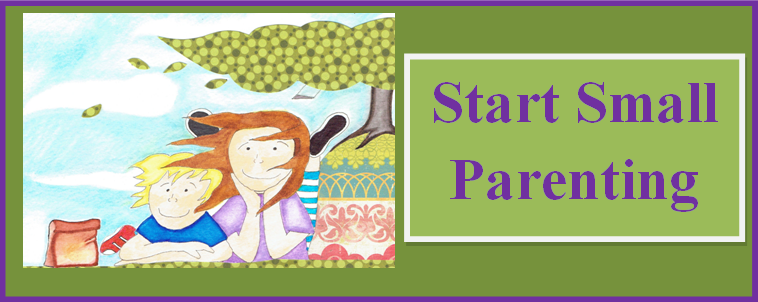The Power of Three is a great parenting tool any time you want your child to understand an expectation or new experience.  It’s three simple steps involving REPETITION.
It’s three simple steps involving REPETITION.
1. Tell or show your child the behavior that you expect in a situation the night before or that morning. Use as few words as possible.
2. Tell or show them again a few hours or half a day before the situation.
3. Tell or show them one more time just before you are about to enter the situation.
Young children don’t have a good sense of time, so don’t let too many days elapse between the three steps.
Introduce a New Event
This can work brilliantly when introducing a new experience to your child. For example, what if you want your child to start swim lessons? Here are the steps:
1. The first introduction might be one or two days before the class starts. Fairly close to the start date is best. Tell your child where the activity will take place and if there will be anyone there they know. Find out enough about the class to provide a bit of information about what will take place. I’m a huge fan of visuals especially for the Under 5 set, so you could show a picture of kids having fun in swim lessons.
2. The morning before the event you could show the picture again and talk positively about a swim experience of your own. Tell them what behavior you expect: respectful listening to the teacher, following all safety rules, trying something new, etc.
3. The third time could be in the car on the way to the lesson. You can let them know where you are going and a few small details about what to expect.
It is important not to overwhelm with too much information or words.
Introduce an On-track Behavior
If applicable, be prepared to follow through with whatever EDUCATIONAL CONSEQUENCE you have given them if they are not able to do the expected behavior in the situation. This applies less to something of choice – which might include swim lessons – and more to working with on-track behaviors, like how to be respectful when shopping in the store. In the latter case, let the child know each of the three times what the expected behavior is (not pulling items off the shelf, for example) – and the educational consequence (which might be leaving the store or waiting in the car with a friend.)
Here’s another example. Addy is 4. She is going on her first plane ride with her family. Her dad finds a Google photo of a girl sitting on an airplane and shows it to Addy. He describes what the plane looks like and how the seats are arranged. He shows how everyone must sit in their seats on the airplane. The girl needs to sit in her seat for a long time, but he will bring lots of snacks and things to do together.

This appeals to the visual learning part of Addy’s brain. Later that day on the swings, he talks about how the plane goes up and she might feel that funny feeling in her stomach like when the swing goes up. Same with going down. This appeals to Addy’s kinesthetic or movement learning sense. The next day, her 7-year-old cousin visits and tells her all about the plane ride she took earlier that summer. This is verbal sharing that appeals to her auditory learning skills as well as the added element of interpersonal learning with another.
The Power of Three can also help with behavior expectations, especially when going to a new event. What’s appropriate behavior at a party, a shopping mall, a festival, or a library? While children will still need reminders and opportunities to increase their impulse control around these behaviors, at least they will be clear on what is expected of them in different social situations.
A benefit of Power of Three is that it encourages the parent to Take Action instead of Wait and See what will happen. Expectations are clearly provided for the child. This increases the child’s feeling of safety by observing that the parent is in charge. It’s a useful practice for behavior management. And it helps to build the child’s maturity and confidence.
In Review:
- Tell or show your child what is going to happen or what behavior you expect before an event, such as the night before. Tell or show them the morning of or a few hours before the event occurs. Tell or show them just before the event, perhaps as you pull up in the car.
- Don’t Overtalk. Be Brief.
- The act of repetition is helpful. When small children are learning something new, repetition is good.
- Whenever possible, incorporate different learning styles, such as visuals, movement, or sound.
- Don’t use the Power of Three too far out in terms of timing before an event is to occur.
There are so many applications of this tool: Nap or Bedtime, How to Treat a Sibling or a Playmate, How to Talk to Adults, How to Treat Someone’s Home Respectfully, Any Difficult Behavior and so much more.
Please SHARE YOUR IDEAS and how you introduce On-track Behaviors. 🙂


Annie, this is pithy, perfect advice. So often we just SPRING STUFF on kids and expect them to instantly handle it! To this day (my “kids” are 20 and 23) I try to give them the information they need and deserve well in advance.